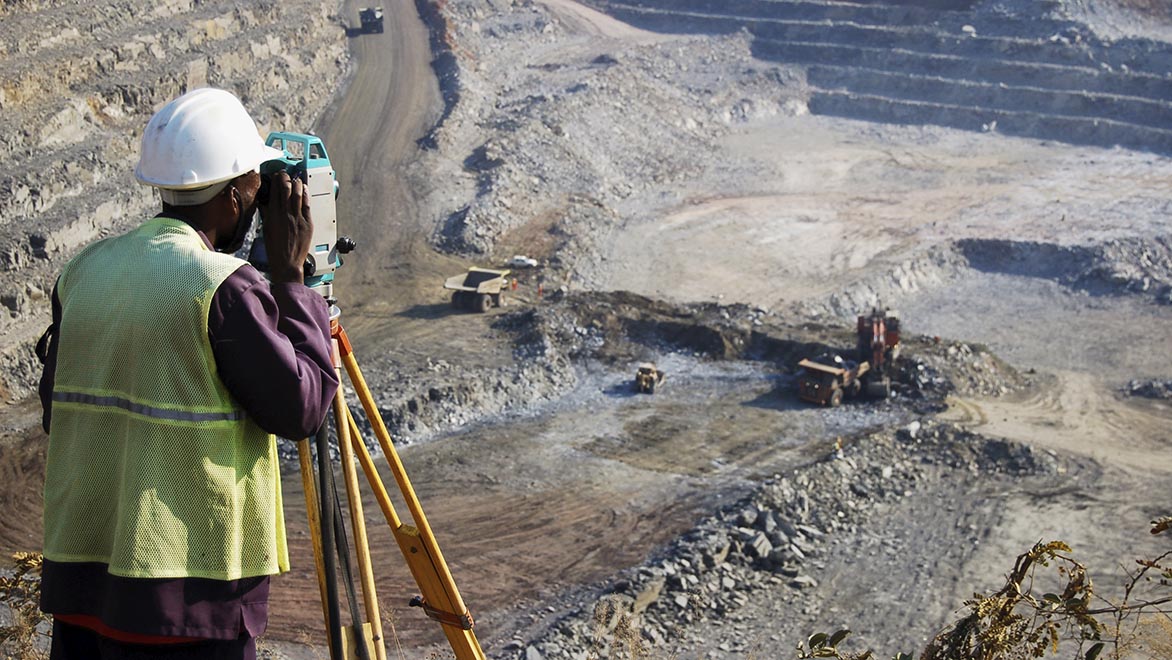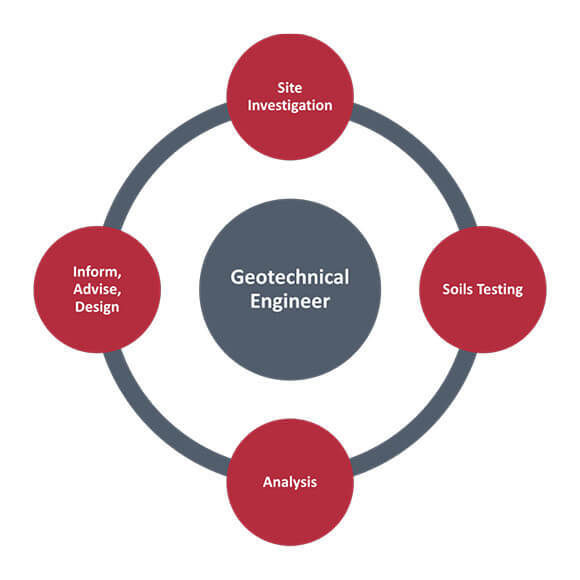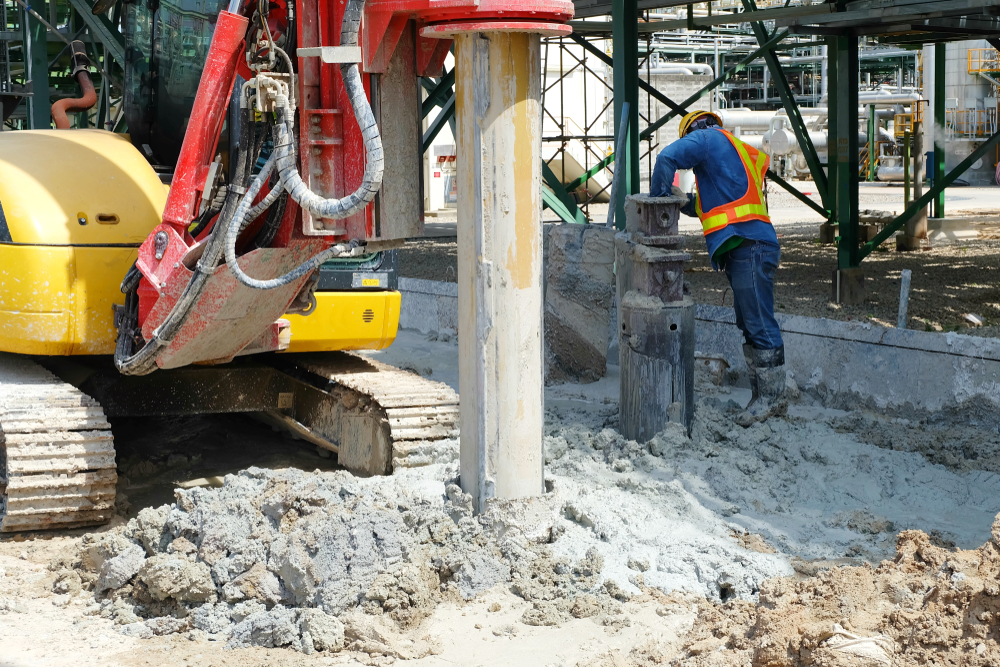Getting My Geotechnical Engineering Services South Africa To Work
Getting My Geotechnical Engineering Services South Africa To Work
Blog Article
Geotechnical Engineering Services South Africa Things To Know Before You Get This
Table of ContentsThe Best Guide To Geotechnical Engineering Services South AfricaGetting The Geotechnical Engineering Services South Africa To WorkExcitement About Geotechnical Engineering Services South AfricaGetting The Geotechnical Engineering Services South Africa To WorkGeotechnical Engineering Services South Africa for Beginners
Rates of pay generally raise as your knowledge and skills expand, with standards directing to a graduate beginning income of between 18,000 and 28,000 per year in the UK. This increases to 26,000 to 36,000 with a couple of years of experience and then getting to 40,000 to 60,000+ for senior, chartered or master engineers.However, with the ideal application it is possible to master the occupation and gain access to a challenging yet rewarding and important career. A geologist would require to retrain to become a geotechnical designer, although there is a lot of cross-over between the two occupations, which can make this easier. Geologists require to have an understanding of dirts, rocks and various other materials from a scientific viewpoint, while geotechnical engineers tale their knowledge of issues such as soil and rock mechanic, geophysics and hydrology and apply them to design and environmental tasks.
When beginning, these designers will certainly often tend to service less complex jobs, accumulating understanding and experience prepared for even more challenging job later. Geotechnical engineers tend to specialise in details areas as they grow in experience, concentrating on certain frameworks such as trains, roads or water. These designers additionally collaborate with sustainable power, offshore and onshore oil and gas, nuclear power, and much more.
The time taken to become a geotechnical designer depends on where you are based, where you research and what degree of education you desire to acquire before going into the office. Geotechnical Engineering Services South Africa. Generally-speaking it takes 3-4 years to get to the fundamental needs to begin a profession as a geotechnical engineer.
The Facts About Geotechnical Engineering Services South Africa Uncovered
These tasks ensure they don't posture a threat in the future during the construction process. This short article will highlight three essential aspects that make geotechnical specialists needed for any kind of construction project. Fundamentally, geotechnical engineers are responsible for the analysis of the ground and dirt problems concerned. This consists of synthetic and all-natural issues alike, ranging from laws and jurisdictions to the surface and below ground elements.
All land subsidence and all-natural danger reduction techniques/tests are used to explore the terrain in its entirety. Geotechnical Engineering Services South Africa. The concept is to minimize the danger of accidents during and after the construction process. Without these consultants, contractors may promise that the structure will certainly not establish distress during the building procedure. This is especially useful in areas where the same collection or comparable tools and resources require to be used in greater than one task.

The Of Geotechnical Engineering Services South Africa

Internal training and national-level qualifications are available for occupation improvement. Duties consist of screening asphalt, concrete, and aggregate materials, in addition to maintaining laboratory equipment. This role appropriates for those with an eager passion in lab operations and high quality control. As the need for geotechnical engineering specialists continues to soar, now is a perfect time to consider an occupation in this vibrant field.
Quality control (QA) boils down to having a quantifiable test outcome. There are several examinations geotechnical engineers can carry out that produce valid, clinical info, that project groups can use to make smart project choices and make sure the agreement requirements are being fulfilled. You can make use of a nuclear densometer to determine moisture content and density of dirt.
Quality control (QC) involves aesthetic observation by the geotechnical designer. The engineer would certainly observe the compaction of the dirt to guarantee it was done in conformity to agreement papers. Monitoring of the compaction would certainly function as the proof, as opposed to an examination with a quantifiable outcome that was gotten by the nuclear densometer in the example in the paragraph above.
How Geotechnical Engineering Services South Africa can Save You Time, Stress, and Money.

With that said borehole, you normally drill down to a pre-determined deepness or a deepness influenced by come across subsurface conditions that departed from presumptions. If it is natural soil through-out deepness, you could assume that you will likewise find generally the exact same product from within that opening in the remainder of the location you are developing your structure.
Extra boreholes or other methods of exploration/testing (i.e. test pits, geoprobes, CPTs, basics etc) would help you much better define the subsurface profile, however there is constantly an opportunity that the subsurface beyond the exploration/testing places differs considerably from what was visually observed. Undocumented manmade fill is different than all-natural dirt because you most definitely never know what you are mosting likely to encounter (e.g.
Because of the uncertainty of the undocumented fill, many tasks need the elimination or enhancement of the fill within the proposed structure limitations and under various other lots birthing frameworks. This is due to the fact that the homes of the undocumented fill are normally really heterogeneous and might not be comparable as the homes encountered in the exploration/test area.
More About Geotechnical Engineering Services South Africa
Geotechnical designers can use a system of instruments such as inclinometers, study tracking factors, piezometers, extensometers, or settlement plates. For example, inclinometers could be installed behind an excavation assistance wall surface to measure just how much the wall relocations as a result of excavation. Movement of the wall inward towards the excavation implies that there might be a loss of ground behind the wall surface and for that reason potentially settlement.
Report this page